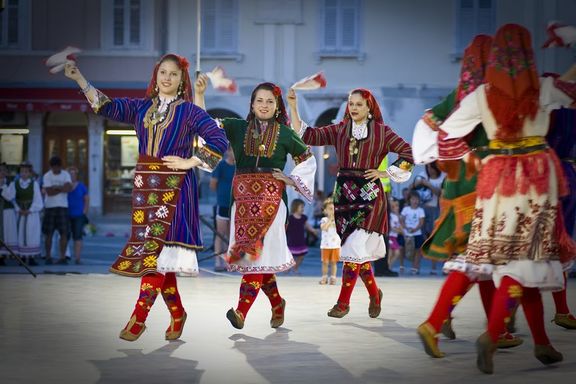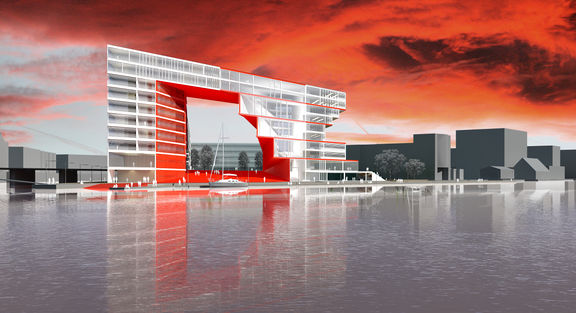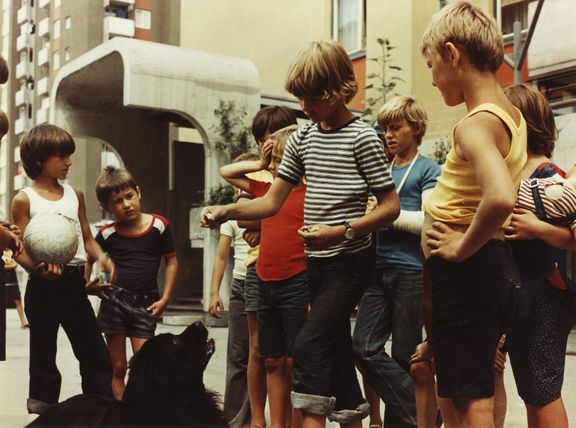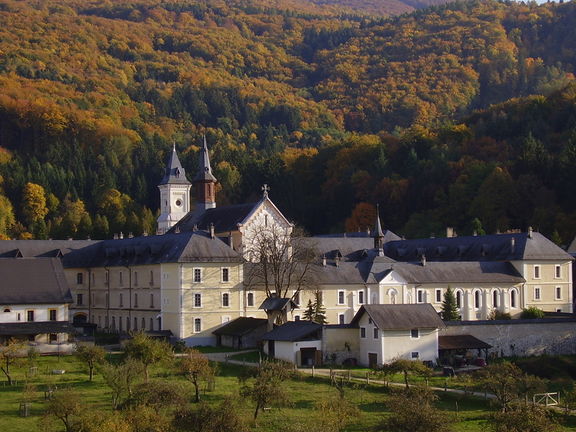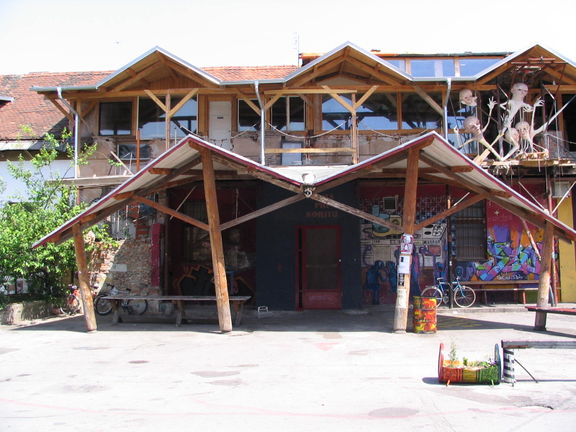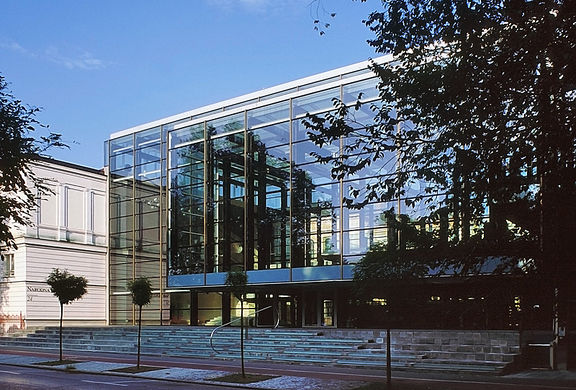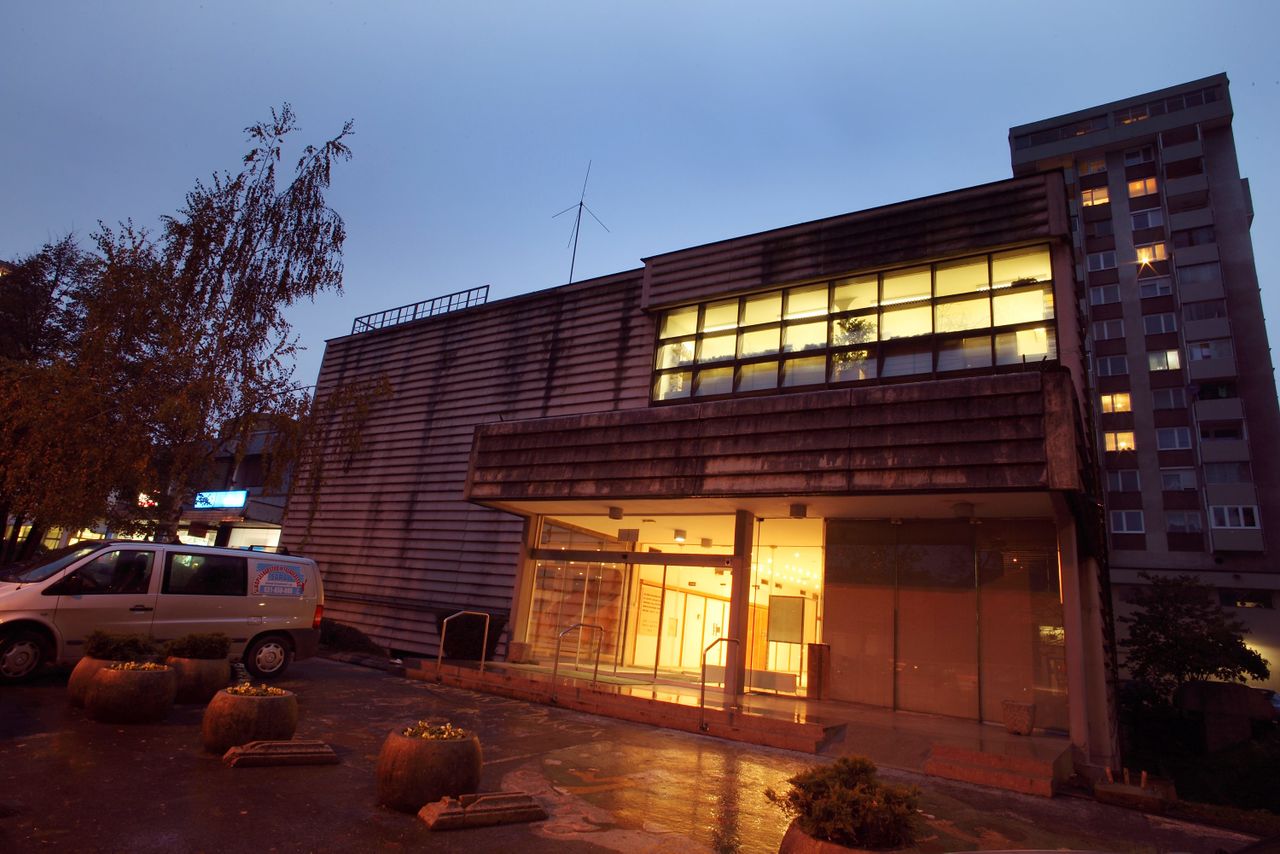 The front view of the Španski borci Culture Centre. The front view of the Španski borci Culture Centre.
Španski borci Culture Centre re-opened in November 2009 in the Ljubljana-Moste neighbourhood of the city. Run by En-Knap Productions, the centre represents the largest facility intended for cultural activities in Slovenia managed by a non-governmental organisation. Providing a much-needed performing space in Ljubljana as well as two rehearsal spaces, the centre's programme focuses on stage arts, however, it also cover the areas of music, visual arts, literature, and offers a children's programme. The centre also includes a reading room, mediatheque, coffee shop and gallery.
As the permanent residence of the EnKnapGroup (EKG) and one of the venues of the Gibanica (Moving Cake) Festival of Slovene Dance, the Španski borci Culture Centre has been slated since June 2011 to become the seat of the new Centre of Contemporary Dance, according to the agreement signed by the Ministry of Culture and the Municipality of Ljubljana.
NOT ROBOT, WRITING DONE, NEEDSUPDATE, NOVERIFY, NODEPO, PHOTO, Article, Dance, Theatre & Dance, Theatre, NIFERTIK, Music, INFOBOX, TOPROOFREAD, HAS LOGO, HAS MAP, Public entities, Visual arts, Venues, Literature venues, Literature, Visual arts venues, Articles maintained by Tonko Sekulo, Music venues, Theatre venues, COVER, Cultural centres, Contemporary dance, Dance venues
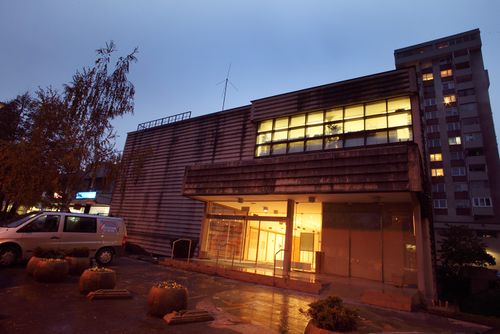
|
|
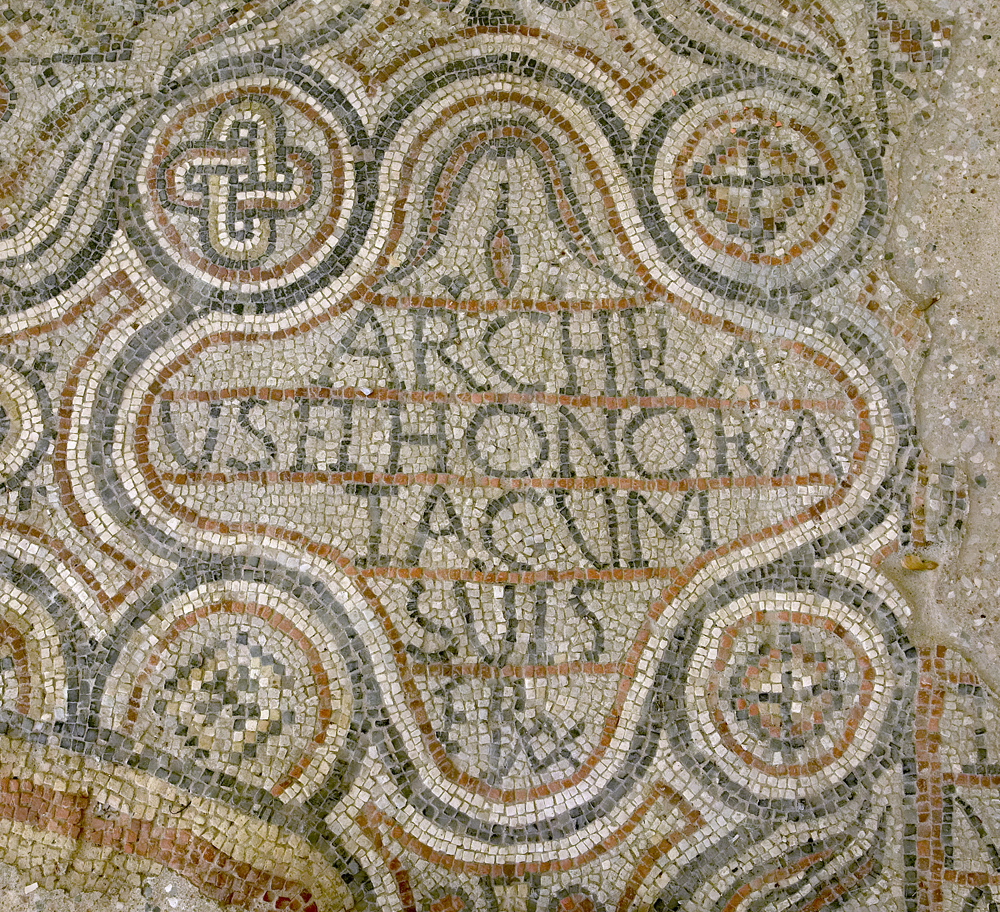 One of the best preserved donor inscriptions on the floor of the baptismal font in the Christian Centre archaeological park, the inscription says that Ahelaj and Honorata with their families contributed 20 feet of mosaic One of the best preserved donor inscriptions on the floor of the baptismal font in the Christian Centre archaeological park, the inscription says that Ahelaj and Honorata with their families contributed 20 feet of mosaic
Emona (Latin: Colonia Iulia Aemona) was a Roman civil town, built on the site of an old indigenous settlement on the territory of the present Ljubljana around 14 AD. This is evidenced by an inscription about a donation that the city received from the emperors Augustus and Tiberius.
The Roman Emona sites in Ljubljana can be seen in several parts west of the old town centre. Emona's ground plan was 430 metres times 540 metres and was surrounded by city walls, which were 6 to 8 metres high and 2.5 metres thick. The southern city wall was redesigned in 1930s by the architect Jože Plečnik.
Emona had a population of 3,000 to 5,000 people, mostly farmers, landlords and merchants, including a small number of government officials and war veterans. Its streets were paved and its houses were built of stone with the hypocaust underfloor heating system, and connected to a public sewage system. The remains of a baptistery with a pool, mosaics, and part of portico may be seen at Erjavčeva 18, next to Cankarjev dom Culture and Congress Centre.
NOT ROBOT, WRITING DONE, INFOBOX DONE, PROOFREAD DONE, FERTIK, NOVERIFY, NODEPO, PHOTO, FEATURED, Article, NO LOGO, Articles maintained by Janez Premk, Monuments and sites, Roman archaeological findings, COVER
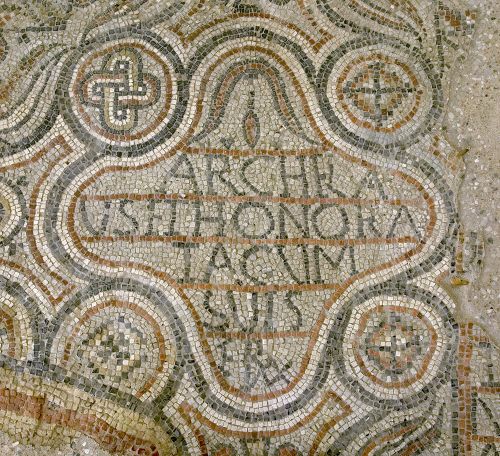
|




